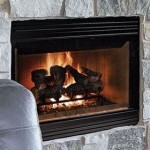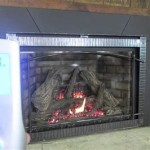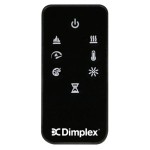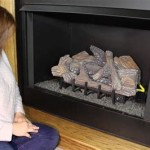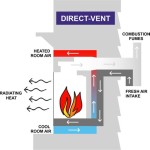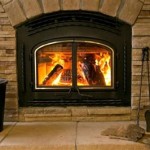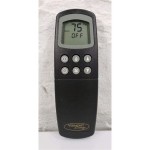Skytech Fireplace Remote Manual: A Comprehensive Guide
The Skytech fireplace remote is a ubiquitous device, providing convenient control over gas fireplaces. This article serves as a comprehensive user manual, detailing the operation, troubleshooting, and maintenance aspects associated with Skytech fireplace remotes. Understanding the functionalities and potential issues is essential for ensuring safe and efficient use of the fireplace.
Skytech remotes come in various models, each with slightly different features and functionalities. It is crucial to identify the specific model number of the remote control system before attempting any programming or troubleshooting steps. The model number is typically found on the back of the remote or on the control module installed within the fireplace. Common Skytech remote models include, but are not limited to, the Skytech 3301, 5301, and 9800 series. This article will address general functionalities applicable to most Skytech models, highlighting specific differences where necessary.
Understanding the Basic Components
A typical Skytech fireplace remote system consists of several key components:
The Remote Handset: This is the portable device used to control the fireplace. It usually features buttons for power on/off, flame height adjustment (if applicable), and often a thermostat function. Some models also include timers and child safety locks.
The Receiver Box: This unit is typically installed inside the fireplace cavity or a nearby accessible location. It receives the signals from the remote handset and relays commands to the gas valve, controlling the fireplace operation. The receiver box is usually powered by batteries or house current.
The Gas Valve: This component regulates the flow of gas to the fireplace burner. The receiver box controls the gas valve based on the signals received from the remote handset.
The Pilot Assembly: In some fireplaces, the remote system controls the pilot light. In others, the pilot light is always on, or the remote solely controls the main burner.
Understanding the interaction between these components is crucial for diagnosing and resolving any issues with the fireplace remote system.
Initial Setup and Synchronization
Before operating the fireplace using the remote, it is necessary to ensure proper synchronization between the remote handset and the receiver box. This process typically involves the following steps:
Battery Installation: Ensure that both the remote handset and the receiver box have fresh batteries installed. Low battery power can lead to erratic behavior or complete failure of the system.
Receiver Box Power On: Locate the power switch on the receiver box (usually an on/off/remote selector). Set the switch to the "Remote" position. This enables the receiver to accept signals from the remote handset. In some cases, a momentary "learn" or "sync" button needs to be pressed on the receiver to initiate the synchronization process.
Synchronization Procedure: Refer to the specific model's instructions for the synchronization procedure. Generally, this involves pressing a specific button combination on the remote handset while the receiver is in the "learn" mode. The receiver will typically emit a beep or illuminate an LED to indicate successful synchronization.
Testing the System: After synchronization, test the system by using the remote handset to turn the fireplace on and off. Ensure that the flame height (if adjustable) responds correctly to the remote commands.
If the synchronization process fails, repeat the steps, ensuring that the batteries are fresh and that the remote handset is within range of the receiver box. Excessive radio interference can also disrupt the synchronization process.
Operating the Fireplace with the Remote
Once the remote system is properly synchronized, operating the fireplace is typically straightforward. The basic functions usually include:
Power On/Off: The power button (often labeled "On/Off" or with a power symbol) activates or deactivates the fireplace. Pressing the button once will usually ignite the pilot light (if applicable) and then the main burner. Pressing the button again will extinguish the flames.
Flame Height Adjustment: Some Skytech remotes feature flame height control. These remotes typically have up and down arrow buttons that allow the user to increase or decrease the flame height. The flame height adjustment feature is dependent on the gas valve installed in the fireplace. Not all gas valves support this function.
Thermostat Mode: Many Skytech remotes include a thermostat function. This allows the user to set a desired room temperature, and the fireplace will automatically turn on and off to maintain that temperature. The thermostat mode usually has different settings such as "On," "Off," and "Auto." In "Auto" mode, the fireplace will cycle on and off to maintain the set temperature. The thermostat sensor is located within the remote handset, so its positioning affects the temperature reading.
Timer Function: Some models have a timer function that allows the user to set a specific duration for the fireplace to operate. After the set time expires, the fireplace will automatically turn off.
Child Safety Lock: Certain Skytech remotes incorporate a child safety lock to prevent accidental operation of the fireplace. Activating the child safety lock typically disables the buttons on the remote handset until the lock is deactivated.
Consult the specific model's manual for detailed instructions on using each function.
Troubleshooting Common Issues
Several common issues can arise with Skytech fireplace remotes. Addressing these issues systematically can help restore functionality:
Fireplace Not Responding to Remote: This is one of the most common problems. The first step is to check the batteries in both the remote handset and the receiver box. Ensure that the batteries are fresh and properly installed. Also, verify that the receiver box power switch is in the "Remote" position. If the batteries are good and the switch is in the correct position, try re-synchronizing the remote handset with the receiver box. If the issue persists, check for any obstructions between the remote handset and the receiver box. Radio interference from other electronic devices can also disrupt the signal. Try moving the remote closer to the receiver. If all else fails, the remote handset or receiver box may be faulty and require replacement.
Intermittent Operation: Intermittent operation can be caused by weak batteries, loose wiring, or radio interference. Replace the batteries and check all wiring connections to the receiver box and gas valve. Ensure that the wiring is secure and free from corrosion. If the problem persists, try moving the receiver box to a different location to minimize radio interference.
Flame Height Not Adjusting: If the flame height is not adjusting properly, first ensure that the remote is programmed for variable flame height. Some models require specific programming steps to activate this feature. Also, verify that the gas valve is capable of variable flame height control. If the gas valve is a simple on/off valve, the flame height adjustment buttons will have no effect. If the valve supports variable flame height and the remote is properly programmed, the gas valve itself may be faulty.
Thermostat Not Functioning Correctly: If the thermostat is not functioning correctly, ensure that the thermostat mode is set to "Auto." Also, consider the placement of the remote handset. The thermostat sensor is located within the remote, so its position will affect the temperature reading. Keep the remote away from direct sunlight or heat sources, as this can cause inaccurate readings. Calibrating the thermostat may be possible on some models. Check the user manual for instructions.
Pilot Light Issues: If the remote system controls the pilot light, issues with the pilot can prevent the main burner from igniting. If the pilot light does not ignite, check the gas supply to the fireplace. Ensure that the gas valve is open and that there is sufficient gas pressure. Also, inspect the pilot assembly for any obstructions or debris. A dirty pilot assembly can prevent the pilot light from igniting. If the pilot ignites but goes out immediately, the thermocouple or thermopile may be faulty. These devices generate electricity when heated by the pilot flame, which is necessary to keep the gas valve open.
Maintaining the Skytech Remote System
Proper maintenance can extend the lifespan and ensure the reliable operation of the Skytech fireplace remote system. Regular maintenance tasks include:
Battery Replacement: Replace the batteries in both the remote handset and the receiver box at least once a year, even if the system is not used frequently. This prevents battery corrosion and potential damage to the devices.
Cleaning: Periodically clean the remote handset and receiver box with a soft, dry cloth. Avoid using harsh chemicals or solvents, as these can damage the plastic components.
Wiring Inspection: Inspect the wiring connections to the receiver box and gas valve for any signs of damage or corrosion. Repair or replace any damaged wiring.
Professional Inspection: It is advisable to have the fireplace and remote system inspected annually by a qualified technician. This can help identify potential problems before they lead to costly repairs or safety hazards.
By following these maintenance guidelines, users can ensure the continued reliable operation of their Skytech fireplace remote system.

Skytech 1001th Thermostat Fireplace Remote Control

Discontinued Skytech 1401 Fireplace Remote Control Replaced By Sky 1420 A

Skytech 1420t Lcd Timer Fireplace Remote Control

Skytech 3301p2 Programmable Back Lit Fireplace Remote Control

Skytech Manual Remote Control With Timer For Gas Logs Fine S

Skytech Fireplace Remote Control Com

Skytech 1420 Transmitter Remote Only

Troubleshooting A Skytech Fireplace Remote Control

Skytech Con Th Thermostat Fireplace Remote Control For Latching Solenoid Gas Valves

Skytech 5301p Programmable Fireplace Remote Control With Backlit Touch Screen
Related Posts


